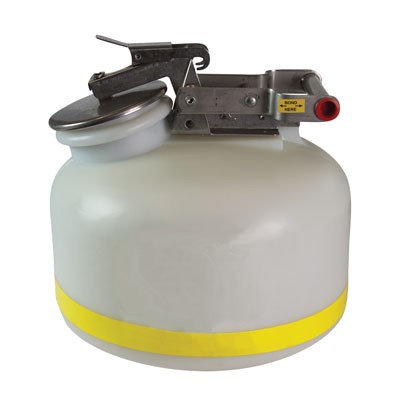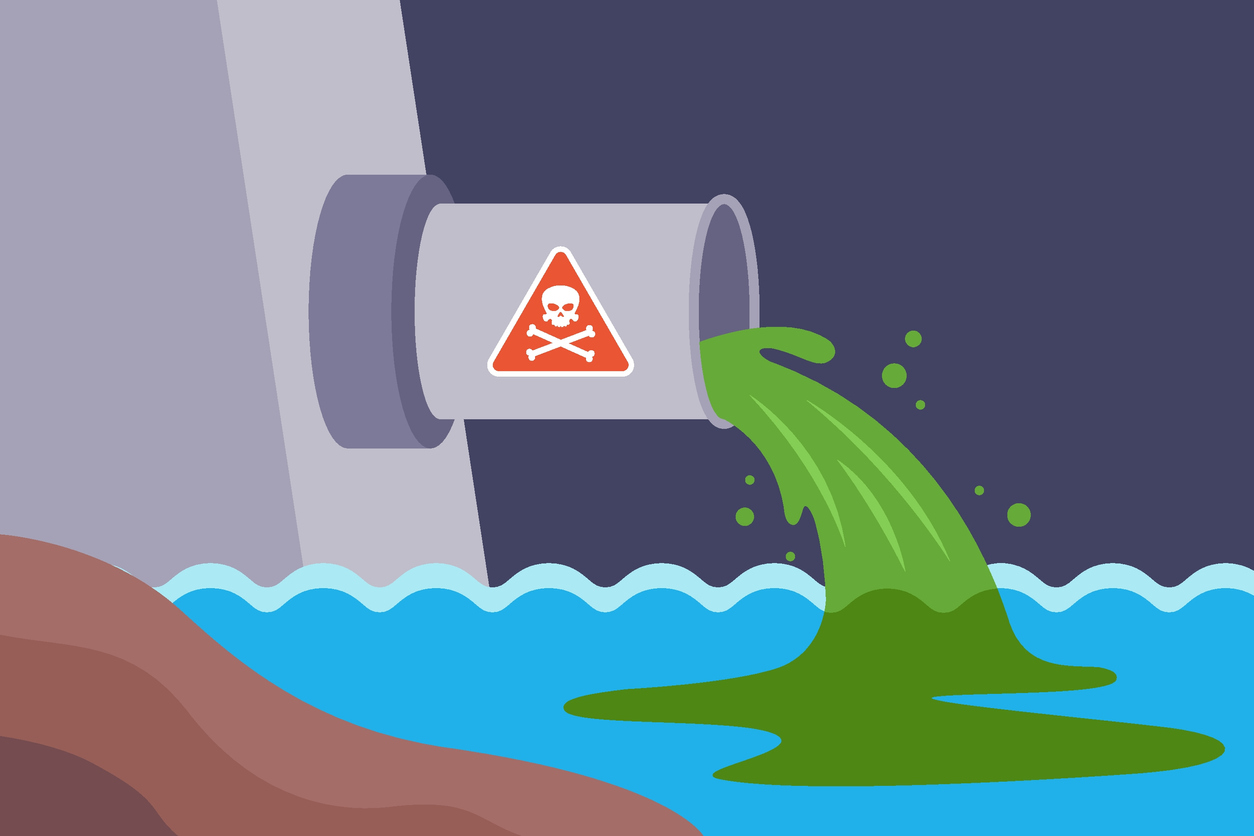Leading Industrial Wastewater Treatment Solutions: Ensuring Compliance and Performance
Leading Industrial Wastewater Treatment Solutions: Ensuring Compliance and Performance
Blog Article
Comprehending the Comprehensive Process of Fluid Garbage Disposal: Ideal Practices and Environmental Impact Considerations
The monitoring of fluid garbage disposal is a complex concern that needs a detailed understanding of different best practices and their linked ecological influences. From the kinds of liquid waste produced to the methods employed for collection, therapy, and last disposal, each step plays a crucial duty in safeguarding environments and public health. As regulatory requirements evolve and modern technology advances, the conversation around these processes becomes progressively essential. What effects do these adjustments hold for future sustainability efforts, and how can stakeholders guarantee that they are adequately addressed?
Sorts Of Fluid Waste
Recognizing the various sorts of fluid waste is important for reliable monitoring and disposal practices. Liquid waste can be generally classified into a number of kinds, each requiring unique handling and therapy strategies.
Industrial liquid waste usually contains dangerous products, including hefty steels, solvents, and chemicals, created throughout making procedures. These wastes require stringent regulatory compliance to shield human wellness and the environment. Residential liquid waste mostly describes wastewater produced from households, including sewage and greywater, which, although less hazardous, can still posture significant dangers if poorly taken care of.
Agricultural fluid waste, consisting of overflow from ranches, often contains plant foods and chemicals that can bring about environmental deterioration if not treated adequately. Clinical fluid waste, produced from healthcare centers, includes infected fluids such as physical liquids and chemicals, requiring specialized disposal approaches to stop infection and ecological contamination.
Last but not least, oil and oil waste, commonly generated by dining establishments and auto markets, can create serious blockages in drain systems otherwise managed appropriately. Understanding these categories promotes targeted techniques for therapy, conformity with guidelines, and effective disposal methods, eventually promoting environmental sustainability and public health security.

Collection Methods
Efficient collection techniques are crucial for the appropriate management of fluid waste, making sure that it is gathered safely and successfully prior to therapy or disposal. Various techniques are utilized relying on the sort of fluid waste produced, the quantity, and the specific attributes of the waste.
One common method is the usage of dedicated collection tanks or sumps, which are developed to capture fluid waste at the resource. These systems typically integrate pumps that assist in the transfer of waste to larger storage containers or treatment facilities. Additionally, mobile collection devices equipped with vacuum modern technology are used in scenarios where waste is produced periodically or in hard-to-reach areas.
For commercial settings, closed-loop systems can successfully lessen leakages and spills, permitting the recovery and reuse of fluid waste. It is additionally vital to train workers on proper collection methods to mitigate threats linked with harmful materials.
Furthermore, applying routine maintenance schedules for collection tools makes sure optimum performance and security. The combination of sophisticated monitoring systems can improve collection performance by providing real-time information on waste degrees and prospective dangers. Generally, efficient collection techniques are fundamental to lasting fluid waste monitoring practices.
Treatment Procedures
Treatment procedures play an essential duty in the administration of fluid waste, transforming possibly dangerous products right into risk-free effluents or reusable sources - liquid waste disposal. These processes can be extensively categorized into physical, chemical, and organic methods, each customized to deal with details contaminants present in the waste stream
Physical treatment approaches, such as sedimentation and filtering, work by getting rid of put on hold solids and particle matter. These techniques are usually the initial step in the therapy chain, successfully lowering the tons on subsequent processes. Chemical therapies entail using reagents to neutralize dangerous substances, precipitate hefty steels, or oxidize natural toxins, thereby improving the safety of the effluent.
Biological treatment processes, consisting of turned on sludge systems and anaerobic digestion, profit from the natural capacities of microbes to break down raw material. These methods are especially effective for wastewater pop over here including biodegradable contaminants. Advanced treatment innovations, such as membrane purification and advanced oxidation procedures, are increasingly utilized to attain greater levels of filtration.
Integrating a combination of these treatment approaches not just ensures compliance with governing requirements however likewise advertises ecological sustainability by recovering beneficial resources from liquid waste.
Disposal Options
Just how can organizations guarantee the risk-free and liable disposal of fluid waste? Efficient disposal choices are vital for safeguarding public health and wellness and the atmosphere. The main techniques consist of land disposal, incineration, and treatment adhered to by discharge into metropolitan wastewater systems.
Land disposal entails the careful containment of fluid waste in assigned landfills, ensuring that it does not leach right into bordering soil or water. Incineration, on the other hand, subjects liquid waste to high temperature levels, transforming it into ash and gases, which need appropriate purification to reduce emissions. This technique appropriates for dangerous wastes that can not be treated with typical ways.
In cases where liquid waste can be dealt with, companies may go with organic or chemical therapy procedures to counteract damaging components before releasing the dealt with effluent right into local systems. This path commonly lines up with governing needs, ensuring that the effluent satisfies safety requirements.
Inevitably, companies should carry out complete analyses of each disposal alternative to determine its stability, taking into consideration aspects such as waste structure, regulative conformity, and potential threats to wellness and the environment. By picking ideal disposal techniques, businesses can add to an accountable waste administration technique.
Environmental Effect
The environmental effect of fluid garbage disposal is an essential factor to consider for companies seeking to reduce their eco-friendly impact. Improper disposal approaches can bring about substantial contamination of water resources, soil deterioration, and damaging impacts on local ecosystems. For example, harmful liquids can seep into groundwater, posturing threats to alcohol consumption water materials and marine life. Furthermore, the discharge news of without treatment or improperly dealt with waste right into surface area waters can cause eutrophication, resulting in oxygen exhaustion and the succeeding fatality of fish and other organisms.

To alleviate these effects, companies need to adopt finest techniques such as implementing strenuous waste treatment procedures, promoting recycling and reuse, and sticking to governing criteria. By taking an aggressive approach to fluid waste management, entities can considerably decrease their ecological impact while supporting lasting growth objectives. Inevitably, a thorough understanding of the ecological impacts connected with liquid waste disposal is vital for informed decision-making and responsible stewardship of all-natural resources.
Verdict
Reliable monitoring of fluid waste is vital for safeguarding environmental stability and public wellness. By embracing best practices in collection, disposal, and therapy, alongside adherence to regulatory criteria, the capacity for damaging contamination of communities can be considerably lowered. Continual innovations in innovation and procedures add to lasting waste management efforts. Inevitably, an extensive understanding of liquid waste disposal not just reduces environmental impacts however additionally promotes a commitment to accountable source monitoring and environmental stewardship.
The management of fluid waste disposal is a complex issue that calls for a comprehensive understanding of various finest methods and their connected environmental effects. From the kinds of liquid waste generated to the methods employed for collection, therapy, and last disposal, each action plays a critical duty in protecting communities and public health and wellness.The environmental influence of fluid waste disposal is a crucial consideration for organizations seeking to lessen their ecological impact. Eventually, an extensive understanding of the environmental resource impacts linked with liquid waste disposal is necessary for notified decision-making and responsible stewardship of natural sources.
Inevitably, a thorough understanding of liquid waste disposal not only alleviates ecological influences yet also promotes a commitment to liable source management and environmental stewardship.
Report this page